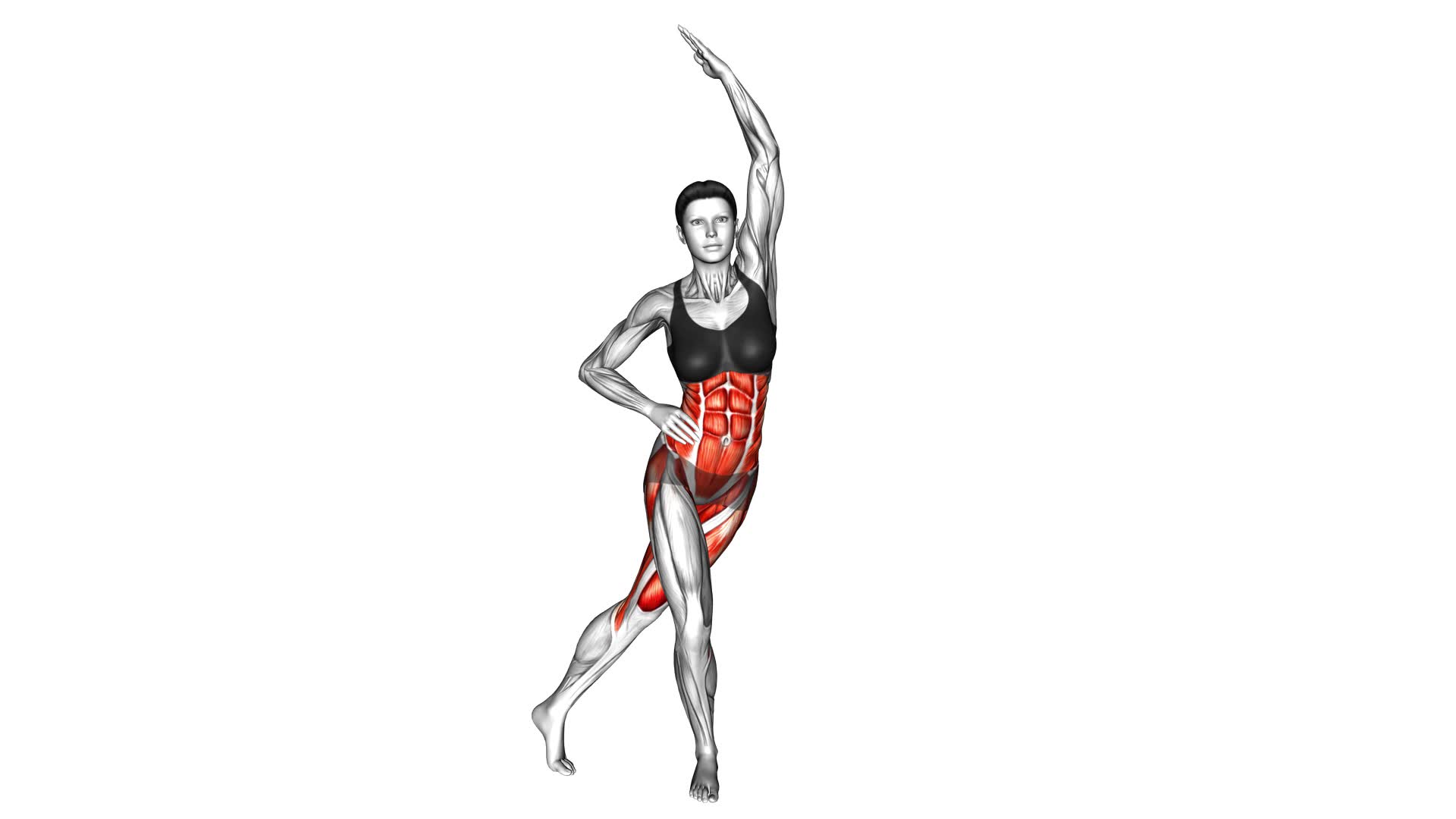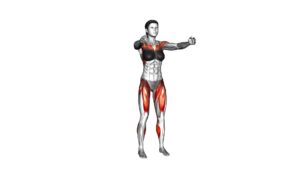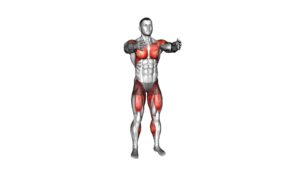Knee Drive to Leg Lift (female) – Video Exercise Guide & Tips

Are you looking for a challenging lower body exercise that targets your glutes and core? Look no further than the Knee Drive to Leg Lift!
Watch This Exercise Video
In this video exercise guide, we'll show you the proper form and provide tips to maximize your results. Whether you're a beginner or an experienced individual, we've got modifications and advanced variations to suit your fitness level.
Get ready to strengthen and tone your legs with this effective exercise. Let's get started!
Key Takeaways
- Maintaining a strong core and engaging the glutes are essential for proper form and technique
- Incorrect knee positioning and lack of core engagement can lead to joint stress and hinder effectiveness
- Overcompensating with arms disrupts balance and proper knee alignment should be maintained throughout the exercise
- Advanced modifications and variations can increase intensity, engage muscles more, and enhance the effectiveness of the workout.
Proper Form for Knee Drive to Leg Lift
To perform the Knee Drive to Leg Lift exercise properly, maintain a strong core and engage your glutes throughout the movement. This exercise targets the core, glutes, and hip flexors, helping to improve stability, balance, and overall lower body strength. However, there are common errors to watch out for and advanced modifications to consider.
One common error isn't maintaining proper form during the movement. It's important to keep your back straight and avoid arching or rounding your spine. This will ensure that you're effectively engaging your core muscles and preventing unnecessary strain on your lower back.
Another common error isn't fully extending your leg during the leg lift. To maximize the benefits of this exercise, make sure to fully straighten your leg and lift it as high as possible while maintaining control.
For advanced modifications, you can add resistance by using ankle weights or a resistance band around your thighs. This will increase the intensity of the exercise and challenge your muscles even more.
Benefits of Knee Drive to Leg Lift
Maximize your lower body strength, stability, and balance with the benefits of the Knee Drive to Leg Lift exercise. This exercise is highly effective in improving balance and strengthening the glutes. By performing the Knee Drive to Leg Lift, you engage multiple muscles in your lower body, including the gluteus maximus, gluteus medius, quadriceps, and hip flexors.
One of the key benefits of this exercise is improved balance. The movement requires you to maintain stability as you lift one leg off the ground and hold it in the air. This challenges your core muscles and helps enhance your overall balance and coordination. As a result, you become more stable in everyday activities and minimize the risk of falls or injuries.
Another advantage of the Knee Drive to Leg Lift is the strengthening of the glutes. As you drive your knee up and lift your leg, you activate the glute muscles, particularly the gluteus maximus. This helps tone and strengthen your buttocks, giving you a firmer and more sculpted appearance.
Incorporating the Knee Drive to Leg Lift into your fitness routine can yield significant benefits for your lower body strength, stability, and balance. It targets key muscles, improves balance, and strengthens the glutes. By consistently including this exercise in your workouts, you can achieve a more well-rounded lower body workout and enhance your overall physical fitness.
Common Mistakes to Avoid
When performing the knee drive to leg lift exercise, it's important to avoid common mistakes that can hinder your progress.
One common mistake is incorrect knee positioning, where the knee isn't aligned properly with the hip.
Another mistake to avoid is lack of core engagement, as this exercise targets the core muscles.
Lastly, be cautious of overcompensating with your arms, as this can take away from the focus on the lower body.
Incorrect Knee Positioning
To avoid common mistakes in knee positioning, ensure that you maintain proper alignment throughout the knee drive to leg lift exercise. One of the most common errors is incorrect knee alignment. It's important to keep your knees in line with your toes throughout the entire movement. Avoid letting your knees collapse inward or flare outward as this can put unnecessary stress on the joints and increase the risk of injury.
By maintaining proper knee alignment, you'll engage the correct muscles and ensure that your knees are protected during the exercise.
Now, let's move on to the next section where we'll discuss the importance of core engagement in this exercise.
Lack of Core Engagement
Engage your core to avoid common mistakes and maximize the effectiveness of the knee drive to leg lift exercise. Your core plays a crucial role in stabilizing your body and generating power during this movement. Here are some important points to keep in mind:
- Importance of core strength: A strong core helps maintain proper form and stability throughout the exercise, reducing the risk of injury and enhancing performance.
- Common misconceptions about core engagement: Many people mistakenly believe that core engagement only involves the abdominal muscles. In reality, it includes the entire midsection, including the back and hips.
- Focus on deep abdominal muscles: To engage your core effectively, concentrate on activating your deep abdominal muscles, such as the transverse abdominis.
- Breathe properly: Remember to breathe naturally and avoid holding your breath, as it can hinder core engagement and increase tension.
- Practice mindful movement: Pay attention to how your core feels during the exercise and make adjustments as needed to ensure proper engagement.
Overcompensating With Arms
Avoid relying too heavily on your arms when performing the knee drive to leg lift exercise. Overcompensating with your arms can throw off your balance and prevent you from effectively engaging your core muscles. Instead, focus on using your abdominal muscles to lift your leg and maintain balance throughout the movement.
Your arms should be used for support and stability, but they shouldn't be the primary driving force behind the exercise. By keeping your arms relaxed and your core engaged, you can ensure that you're getting the most out of this exercise and working the intended muscles.
Modifications for Beginners
Start with a lower knee drive and gradually increase the height as you build strength and confidence. As a beginner, it's important to modify the Knee Drive to Leg Lift exercise to suit your fitness level. Here are some beginner modifications to help you get started:
- Reduce the range of motion: Instead of lifting your leg all the way up, start by lifting it just a few inches off the ground. This will help you focus on engaging the correct muscles and build stability.
- Use support: If you find it challenging to maintain balance, you can hold onto a stable object, such as a chair or wall, for support. This will help you focus on the movement and gradually build strength.
- Decrease the speed: Slow down the movement to ensure proper form and control. This will allow you to engage the muscles effectively and reduce the risk of injury.
- Incorporate progress tracking: Keep a record of your workouts to track your progress over time. This will help you stay motivated and see how far you've come.
- Listen to your body: It's important to listen to your body and not push yourself too hard. If you experience any pain or discomfort, modify the exercise further or consult a fitness professional for guidance.
Advanced Variations for Experienced Individuals
Challenge yourself with the advanced variations of the Knee Drive to Leg Lift exercise to take your fitness to the next level. These advanced modifications won't only intensify your workout but also increase muscle activation for a more effective training session.
One advanced variation is to add resistance by using ankle weights or resistance bands. By incorporating these additional tools, you'll engage your muscles even more, leading to greater strength and endurance gains.
Another advanced modification is to perform the exercise on an unstable surface, such as a balance board or a Bosu ball. This challenges your core stability and forces your muscles to work harder to maintain balance.
You can also try performing the exercise with a medicine ball, holding it in your hands as you drive your knee up and lift your leg. This adds an extra challenge to your upper body and core.
These advanced variations will help you push your limits and achieve greater results.
Now, let's move on to some tips for maximizing your results.
Tips for Maximizing Results
To maximize your results with the Knee Drive to Leg Lift exercise, it's crucial to maintain proper form throughout each repetition.
Keep your core engaged, shoulders relaxed, and focus on driving your knee up and extending your leg with control.
Additionally, consistency is key for progress, so aim to incorporate this exercise into your routine regularly for optimal results.
Proper Form Importance
To maximize your results, it's crucial to focus on maintaining proper form during the Knee Drive to Leg Lift exercise. Proper form isn't only important for maximizing your results, but it also plays a key role in injury prevention.
Here are some tips to help you maintain proper form:
- Keep your core engaged throughout the exercise to stabilize your body.
- Ensure that your knee is driven up towards your chest, maintaining a controlled movement.
- As you lift your leg, keep your back straight and avoid leaning forward or backward.
- Maintain a slow and controlled pace, avoiding any jerky movements.
- Focus on activating your glute muscles and feeling the burn in your hips and thighs.
By following these tips and maintaining proper form, you can prevent injuries and ensure that you're targeting the correct muscles.
Now, let's move on to the next section about consistency for progress.
Consistency for Progress
To maximize your results, it's important that you remain consistent in your efforts and follow these tips for maximizing progress.
Consistency challenges can arise when life gets busy or when motivation wanes. However, staying consistent with your workouts is crucial for seeing improvements.
One way to overcome consistency challenges is to schedule your workouts at a specific time each day or week. Treat these appointments as non-negotiable and prioritize them in your schedule.
Another helpful tip is to track your progress regularly. Progress tracking allows you to see how far you've come and provides motivation to keep going. You can track your progress by recording your workouts, taking measurements, or keeping a workout journal.
Frequently Asked Questions
How Many Sets and Repetitions Should I Do for the Knee Drive to Leg Lift Exercise?
For the knee drive to leg lift exercise, it's recommended to start with 2-3 sets of 10-12 repetitions. As you become more comfortable, you can increase the number of sets and repetitions.
However, it's important to listen to your body and not push yourself too hard.
If you have knee or hip injuries, it's best to consult with a healthcare professional or a certified trainer to modify the exercise to suit your needs and prevent further injury.
Can the Knee Drive to Leg Lift Exercise Be Modified for Individuals With Knee or Hip Injuries?
Yes, the knee drive to leg lift exercise can be modified for individuals with knee or hip injuries. It's important to prioritize proper form and technique to prevent further injury.
If you have knee or hip issues, consider alternative exercises that are less strenuous on those areas. Consulting with a fitness professional or physical therapist can help you find suitable modifications or alternatives that will still target the same muscle groups.
Is It Important to Engage My Core Muscles During the Knee Drive to Leg Lift Exercise?
Yes, it's important to engage your core muscles during the knee drive to leg lift exercise. By activating your core, you stabilize your body and improve balance, which helps prevent injury.
Engaging your core also enhances the effectiveness of the exercise, as it allows you to generate more power and control throughout the movement.
How Long Should I Hold the Leg Lift Position During the Exercise?
To maintain proper form during the knee drive to leg lift exercise, you should hold the leg lift position for a few seconds. This helps to engage your core muscles and improve stability.
Adding this exercise to your workout routine has several benefits, such as strengthening your hip flexors, glutes, and core, and improving balance and coordination.
It's an effective way to target multiple muscle groups and enhance overall lower body strength.
Can the Knee Drive to Leg Lift Exercise Help Improve Flexibility in the Hips and Hamstrings?
Yes, the knee drive to leg lift exercise can help improve flexibility in your hips and hamstrings. By engaging these muscles and moving through a full range of motion, you're stretching and strengthening them.
This exercise targets the hip flexors and hamstrings, which are key areas for improving flexibility. Regular practice can lead to increased range of motion and improved overall flexibility in these areas.
Conclusion
In conclusion, the knee drive to leg lift exercise is an effective way to strengthen your lower body and improve your balance and stability.
By maintaining proper form and avoiding common mistakes, you can maximize the benefits of this exercise.
Beginners can start with modifications to gradually build their strength, while experienced individuals can try advanced variations to challenge themselves further.
Remember to follow these tips to achieve optimal results from your knee drive to leg lift workouts.

Author
Years ago, the spark of my life’s passion ignited in my mind the moment I stepped into the local gym for the first time. The inaugural bead of perspiration, the initial endeavor, the very first surge of endorphins, and a sense of pride that washed over me post-workout marked the beginning of my deep-seated interest in strength sports, fitness, and sports nutrition. This very curiosity blossomed rapidly into a profound fascination, propelling me to earn a Master’s degree in Physical Education from the Academy of Physical Education in Krakow, followed by a Sports Manager diploma from the Jagiellonian University. My journey of growth led me to gain more specialized qualifications, such as being a certified personal trainer with a focus on sports dietetics, a lifeguard, and an instructor for wellness and corrective gymnastics. Theoretical knowledge paired seamlessly with practical experience, reinforcing my belief that the transformation of individuals under my guidance was also a reflection of my personal growth. This belief holds true even today. Each day, I strive to push the boundaries and explore new realms. These realms gently elevate me to greater heights. The unique combination of passion for my field and the continuous quest for growth fuels my drive to break new ground.







